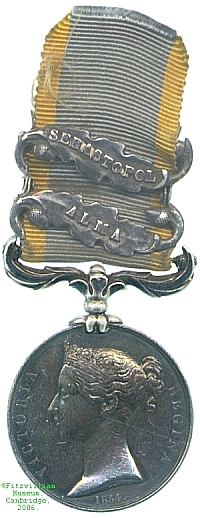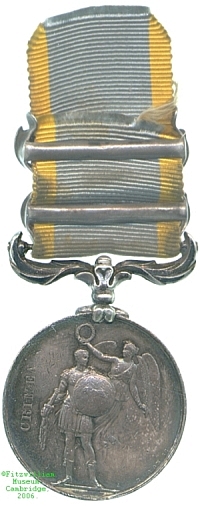
Obverse, a bust of Queen Victoria

Reverse, a Roman warrior being wreathed by the flying figure of Victory

Obverse, a bust of Queen Victoria |

Reverse, a Roman warrior being wreathed by the flying figure of Victory |
Rivalry between Britain and Russia over India, and between Russia and France over the protection of Christians under Ottoman rule, led in the 1850s to a focus of diplomatic attention on the ailing Ottoman Empire. British diplomatic successes led to a Russian attempt to annexe the Danubian principalities of Moldavia and Wallachia from the Ottomans, and the Russian destruction of the Ottoman Black Sea fleet when Turkey went to war in retaliation. Britain and France moved in support of the Ottomans and although the Danubian provinces were returned the allies' conditions for peace far exceeded this. The Russian refusal to meet these conditions led to full-scale international war in late 1854.
The war was mainly composed of allied attempts to reduce Russian fortresses on the Black Sea (and also on the Baltic), of which only the lengthy siege of Sevastopol was successful, but Russia was unable to force withdrawal on the allies, despite opening a second front, and so Tsar Nicholas I made peace in 1856.
An early allied success was the defeat at Alma in 1854 of a larger Russian army that had been sent to oppose the initial allied landings. This medal bears the bar for participation in that battle, and for action during the long siege of Sevastopol.
It is unnamed, as were most medals in haste to get them to the still-fighting army, and the recipient's identity is unknown. Lester Watson purchased the medal from the dealer Gifford at some point before 1928.